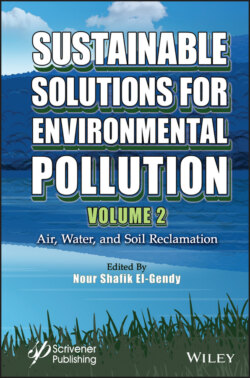Читать книгу Sustainable Solutions for Environmental Pollution, Volume 2 - Группа авторов - Страница 16
1.2.2.1 Redox Processes
ОглавлениеSediment is generally oxygen poor (low diffusion and rapid consumption by microorganisms) and overloaded in OM, so microbial metabolism maintains reducing conditions in sediment where the biodegradation reactions take place according to a redox gradient (Figure 1.1) (Bertrand et al., 2011). Biodegradation effectiveness is often limited by the low availability (presence and mobility) in electron acceptors [e.g., In such environment, microbial activities maintain reducing conditions in the porous sediment and the biodegradation reactions are gradually moving along the redox gradient (Borch et al., 2010). In addition, environmental conditions affect the microbial metabolic pathway: 1) temperature strongly drives the biological activities; and 2) OM and NO3- (exogenous inputs or NH4+ nitrification) availabilities are main reactants for denitrification (Lefebvre et al., 2004). The redox potential is a key element closely related to the pH and the electron acceptor availability (Figure 1.1).
Figure 1.1 Schematic organization of different microbial metabolic pathways in the water systems according the redox potential. The order of terminal electron acceptors (TEA) displayed in an idealized system is Fe(III), Mn(IV), and CO2. Adapted from Bertrand et al. (2011; p. 573), Diaz and Rosenberg (2008), and Hargrave et al. (2008).
If aerobic micro-organisms breathe O2 as terminal electron acceptor (TEA), anaerobic micro-organisms breathe other TEAs, as or OM, producing noxious gases such as CO2, CH4, N20, H2S, and NH3 (Bertrand et al., 2011). These TEAs yield lower energy than O2, so anaerobic respiration is less energy efficient and anaerobes grow slower than aerobes. Low TEA availability (presence and mobility) often limits self-purification process.
NBSs of bioremediation aim at optimizing the TEA input needed to on-site self-purification. To do that, they implement three nested logics: action on form or physical structuration of the environment; action on fluxes of water and substances through it; and action on biocenosis living in the ecosystem. Thus, NBSs act on the geomorphology, hydrology, and physical-chemical characteristics of the environment such as in constructed wetlands (CWs) or filtering banks (FBs); on living organisms such as plants in phytoremediation; or on microbial consortia by passive control of the redox potential by supplying electrochemical inexhaustible TEAs in electro-bioremediation.
